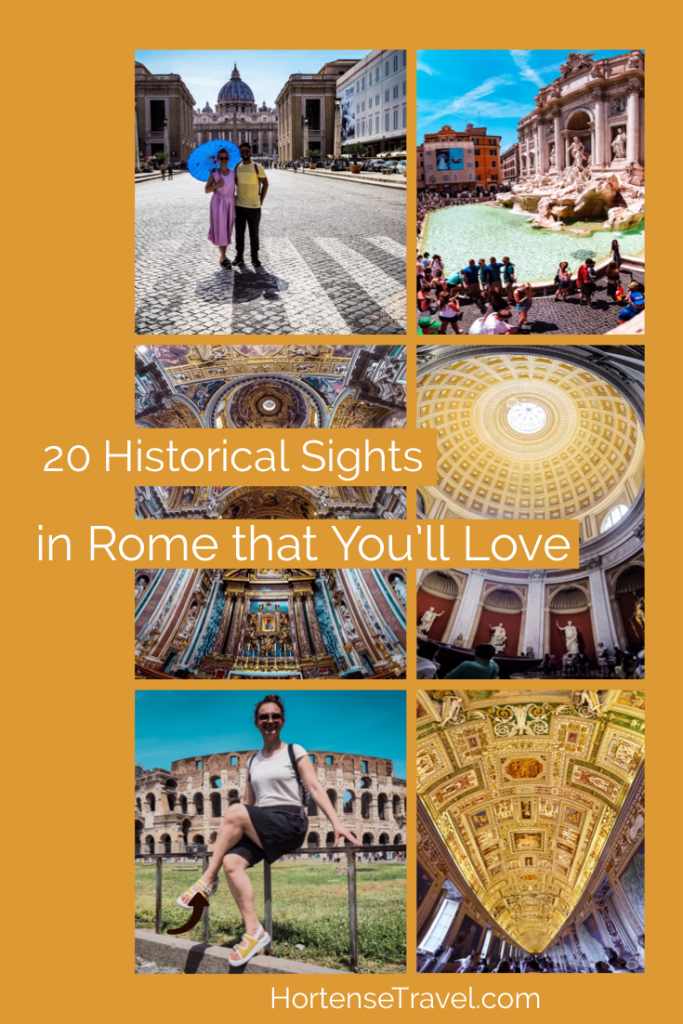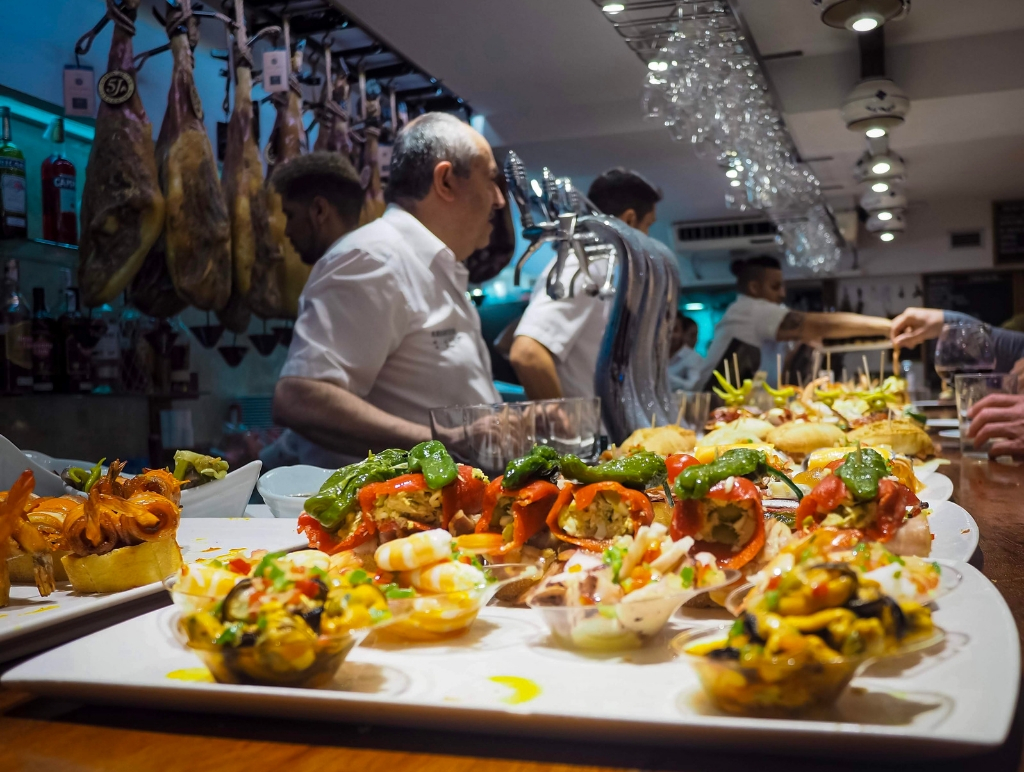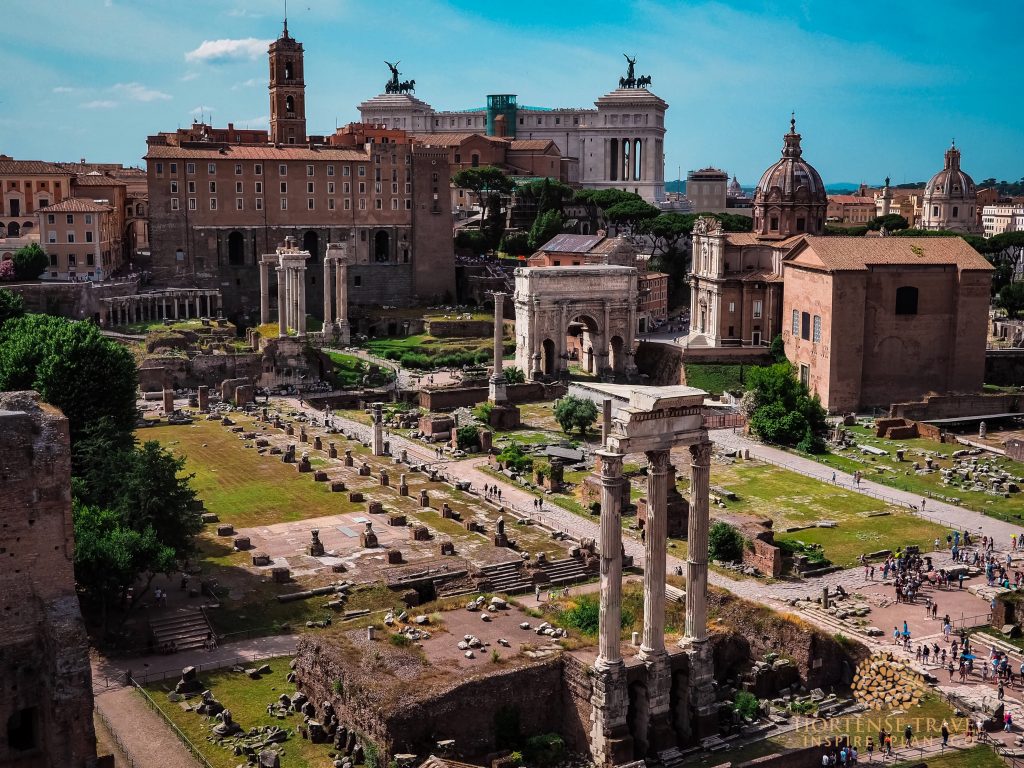
Rome is one of the oldest occupied sites in Europe and its streets contain marks of the remarkable events it has seen over its 28 centuries of existence. Many of these are related to its past roles as the capital of both the Roman Empire and the Papal States. Due to which there are many historical sights in Rome.
Travelers visit the Italian capital city for various reasons, including its culture, history, and architecture. Rome also encloses the independent Vatican City State and its wealth of beauty and history. So, without further ado, let’s talk about 20 unmissable historic sights in Rome and the Vatican City!
Watch the video below to see the historical sights:
20 Historic Sights in Rome
1. Piazza del Popolo
The Piazza del Popolo is an ample oval plaza designed in the 19th century that attracts many visitors daily. It was once part of the main route north through the city and public executions also took place there up until 1826.
At the center of the Piazza, you’ll find an Egyptian obelisk that has been in Rome since 10 BC. The inscribed obelisk is surrounded by symmetrical steps and lion-shaped fountains. Two other monuments that wow visitors are the Porta del Popolo that lines the north of the plaza and the impressive Fontana del Nettuno.
The Piazza is also known for the fact that it connects the three streets that constitute the famous trident: the Via del Corso, the Via del Babuino and the Via di Ripetta. The entrances to the three trident’s streets are divided by the imposing twin churches of Rome.
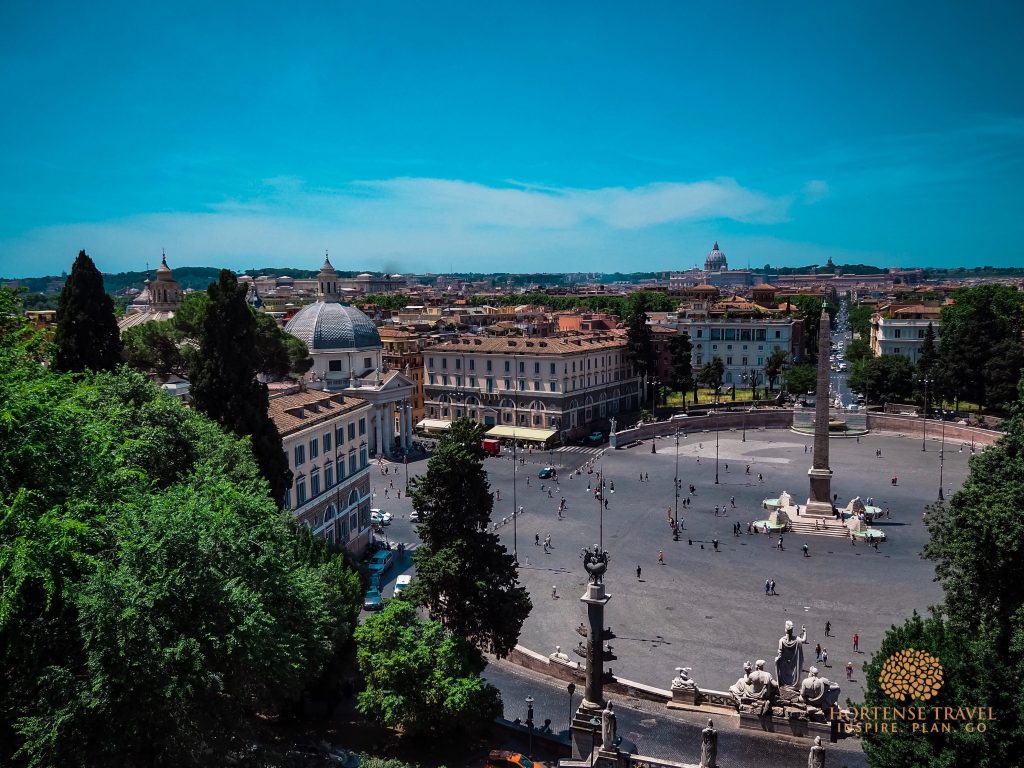
2. Villa Borghese and Terrazza del Pincio
Villa Borghese is one of the most elegant buildings in Rome. The 17th-century villa is mostly visited for the beauty of the building itself, for its art gallery and for the homonym gardens that surround it.
The Villa Borghese Gardens are Rome’s third-largest public park. An unmissable spot at the Villa Borghese Gardens is the Terrazza del Pincio. From there you’ll get an amazing view of the city. If you plan it well, you may even watch the sunset behind Rome!
In addition to the Villa Borghese itself and the Terrazza del Pincio, visitors may also admire other villas (Villa Giulia, Villa Medici and more), the Galleria Nazionale d’Arte Moderna, a zoo, a replica of Shakespeare’s Globe Theatre, a replica of the ancient temple of Asclepius and an intriguing water clock.
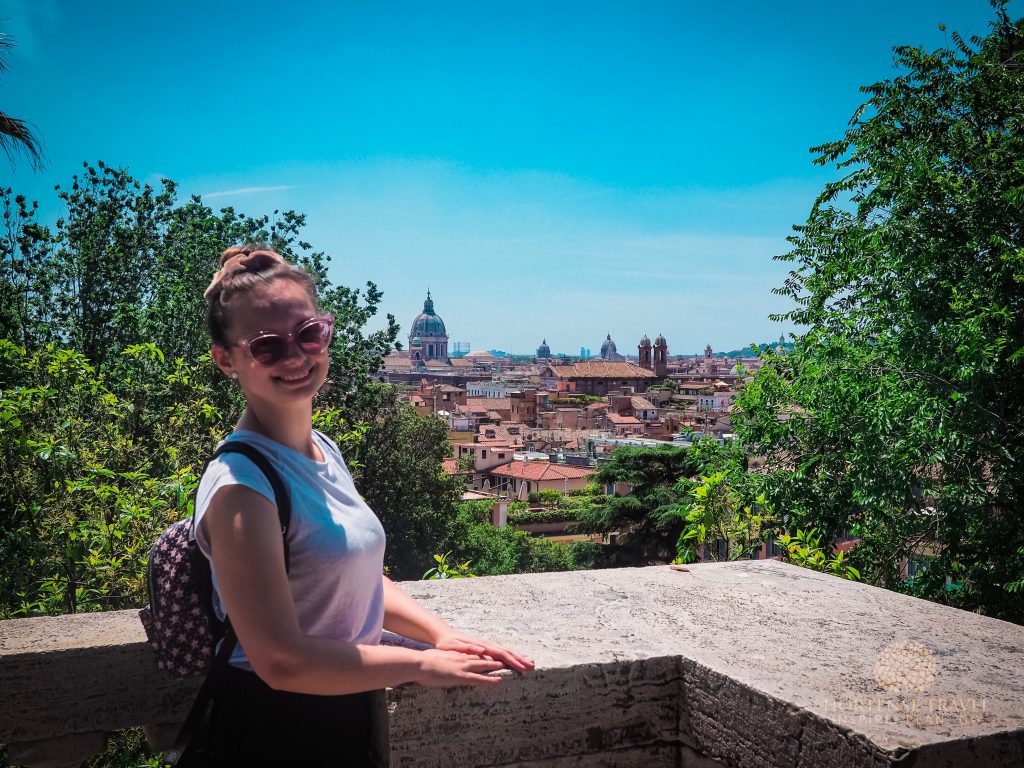
3. Spanish Steps and Trinità dei Monti
You don’t have to climb the Spanish Steps (Italian: Scalinata di Trinità dei Monti) to enjoy their beauty. From the bottom, take beautiful pictures of the fountain, the staircases, the stone handrails and the church of the Santissima Trinità dei Monti.
Still, I highly recommend you to climb those 174 steps to visit the cherry on top. The Trinità dei Monti is a 16th-century church and convent that’s under the care of the French Embassy. Its facade includes two high bell towers and its interior contains 17 chapels and spectacular decorations.
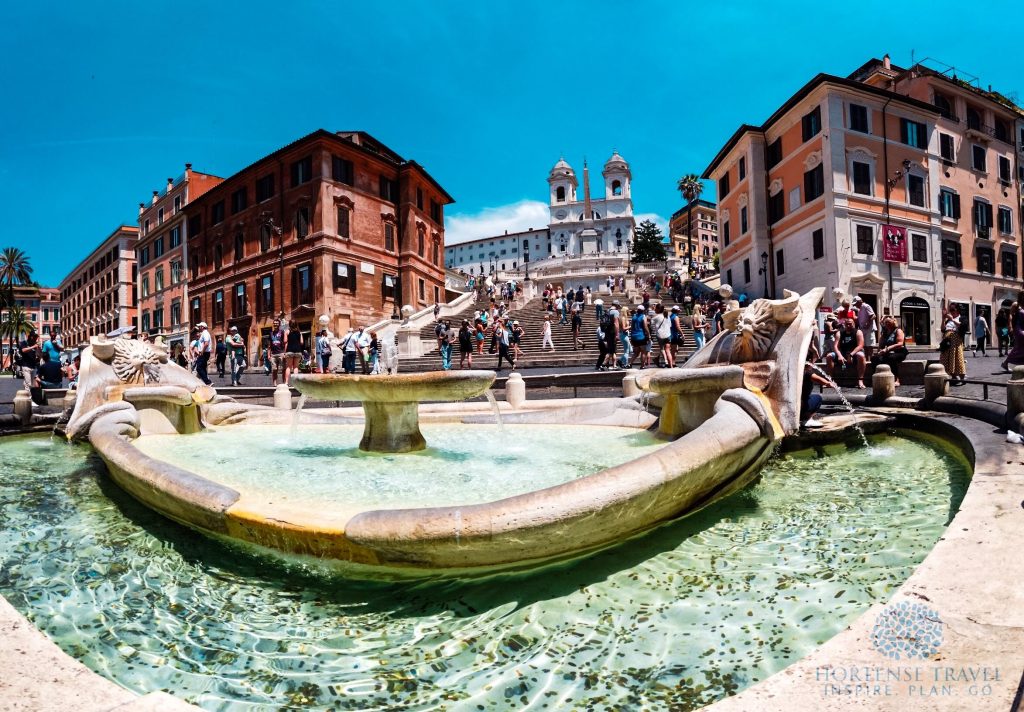
4. Fontana di Trevi
The Fontana di Trevi (English: Trevi’s Fountain) is one of the most popular sights in Rome. Few travelers leave the city without seeing the largest Baroque fountain in Rome.
Another fountain used to be in this location, serving as the terminal point of an important aqueduct in ancient Rome. The current 26-meter (86-feet) high and 49-meter (161-feet) wide Fontana di Trevi was concluded in 1762. Its amalgam of stone statues and flowing water are tributes to the ancient aqueduct and the general importance of water.
Many visitors throw coins to the Fontana di Trevi. Throw one coin backward over your left shoulder using your right hand to ensure you’ll return to the city. Throw one more in the same manner for a new romance and throw a third one for marriage.
To get unoccupied views and the best photo opportunities, visit the Fontana di Trevi early in the morning. That way you’ll avoid the crowds and have a less stressful visit to this beautiful site.
Visiting the Fontana di Trevi in the morning is also a great way to protect your belongings against pickpockets since it’s in crowds that they work best. If you prefer the sleep in, make sure to wear your valuables in front of you where you can see opportunistic hands trying to steal them!
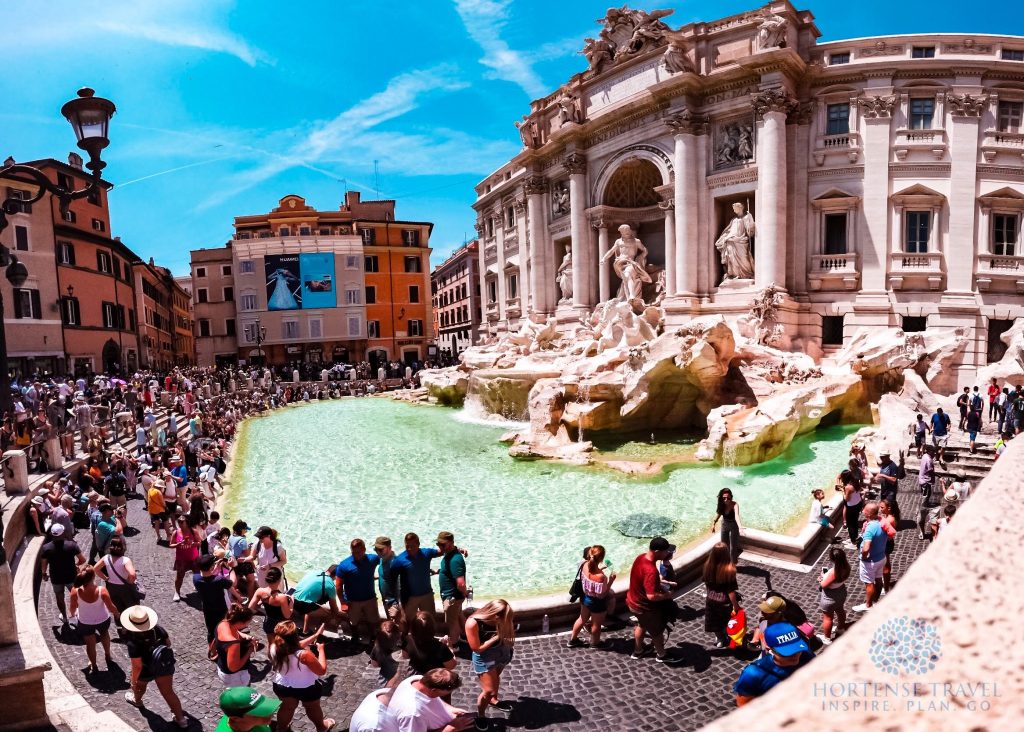
5. Altare della Patria
The Altare della Patria (English: Altar of the Fatherland) is officially known as the Monumento Nazionale a Vittorio Emanuele II. It was built in honor of the first king of the country following the Italian unification. It’s adored as a tribute to Italy and the Italian society.
An equestrian statue of Vittorio Emanuele II is the centerpiece of the monument. It’s surrounded by astonishing stonework featuring stairways and columns, several other statues, fountains and the tomb of an unknown World War I soldier.
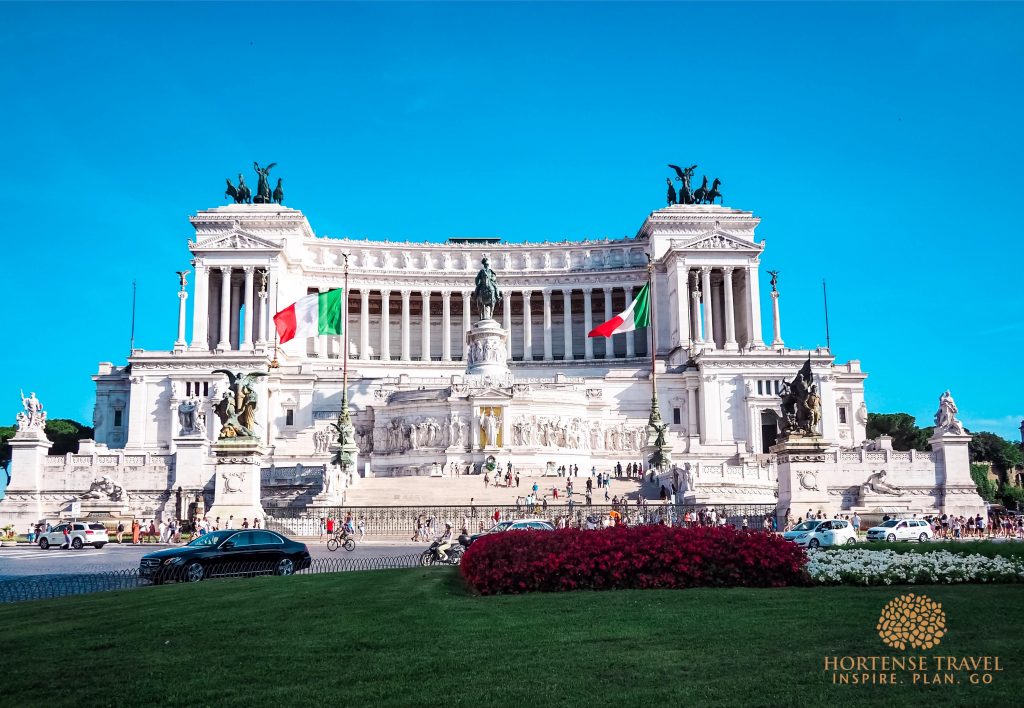
6. Mercato di Traiano
Near the Colosseo, you’ll find the Mercato di Traiano (English: Trajan’s Market). It opened in 113 AD and is regarded as the world’s oldest shopping mall. Even though you won’t be able to do much shopping there anymore, the ruins of its shops, apartments, and library are worth a visit!
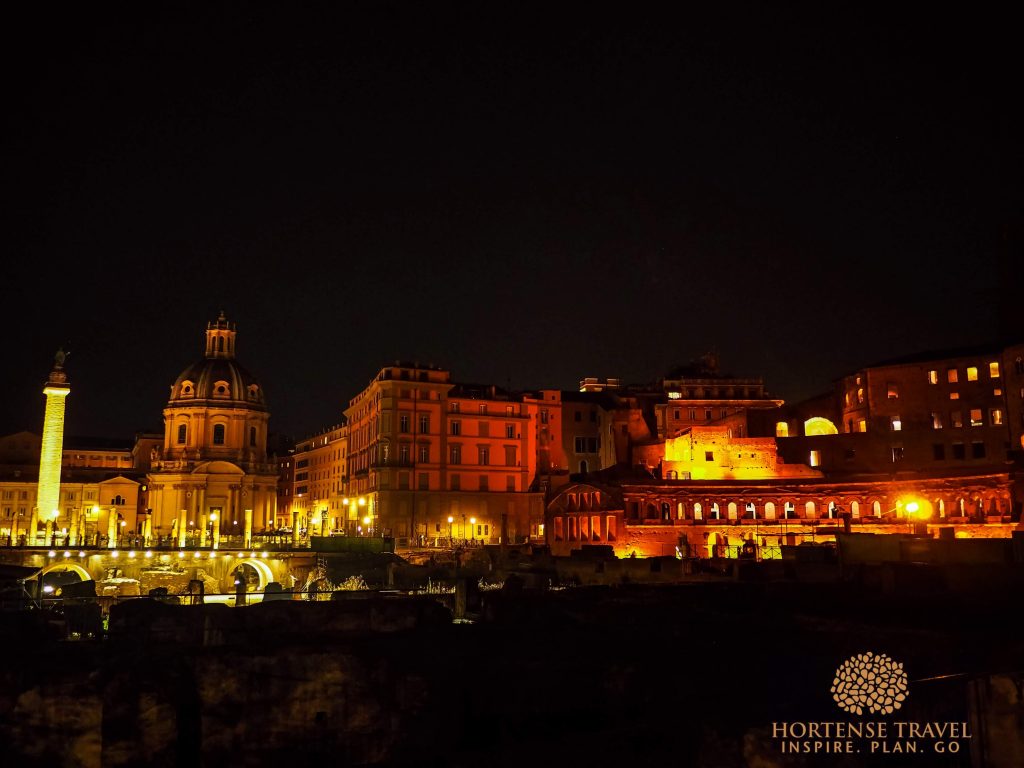
7. Forum Romanum
The Forum Romano (English: Roman Forum) was a very important plaza in ancient Rome. Today, even though you’ll only see the ruins of the buildings that once surrounded it, you’ll still get a feeling of its significance.
It started off as a marketplace and became the center of commerce of Rome. The location was also used as the stage of processions, criminal trials and, of course, gladiatorial contests.

8. The Narrow Streets of Rome
To find some of the city’s picturesque cobblestone streets, head to the Piazza del Popolo. From there, walk down one of the trident’s streets (Via del Corso, Via del Babuino and Via di Ripetta) and explore the narrow streets that connect those. You’ll find plenty of interesting churches, quirky shops, and delicious food. Take this opportunity to eat delicious gelato and to relax while roaming the narrow streets of Rome.
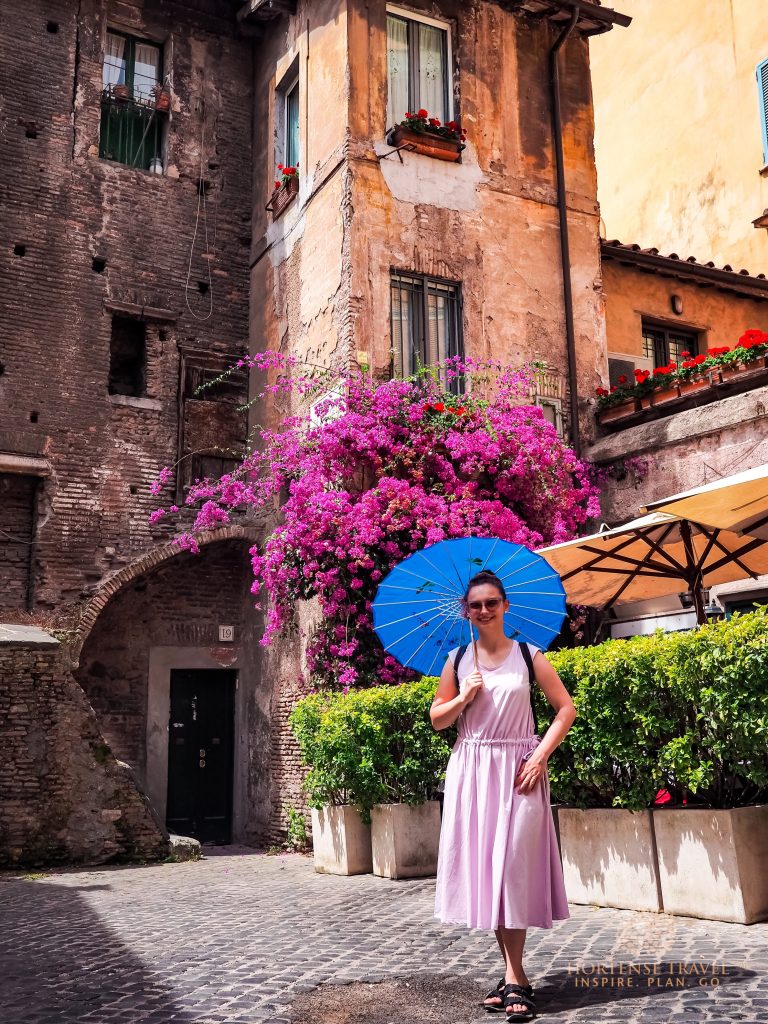
9. Campo de’ Fiori
Campo de’ Fiori literally means “field of flowers” and even though that’s how the location once looked, today you’ll find a beautiful plaza there instead. Its center is dominated by a statue in honor of Italian philosopher Giordano Bruno who was executed in 1600 by the Roman Inquisition.
During the day, the location holds a farmer’s market, which is great for both those who want to find the best ingredients and those looking for souvenirs. During the evening, you may sit down and enjoy a meal or a drink at one of the terraces of the surrounding restaurants and cafes that take over the plaza.
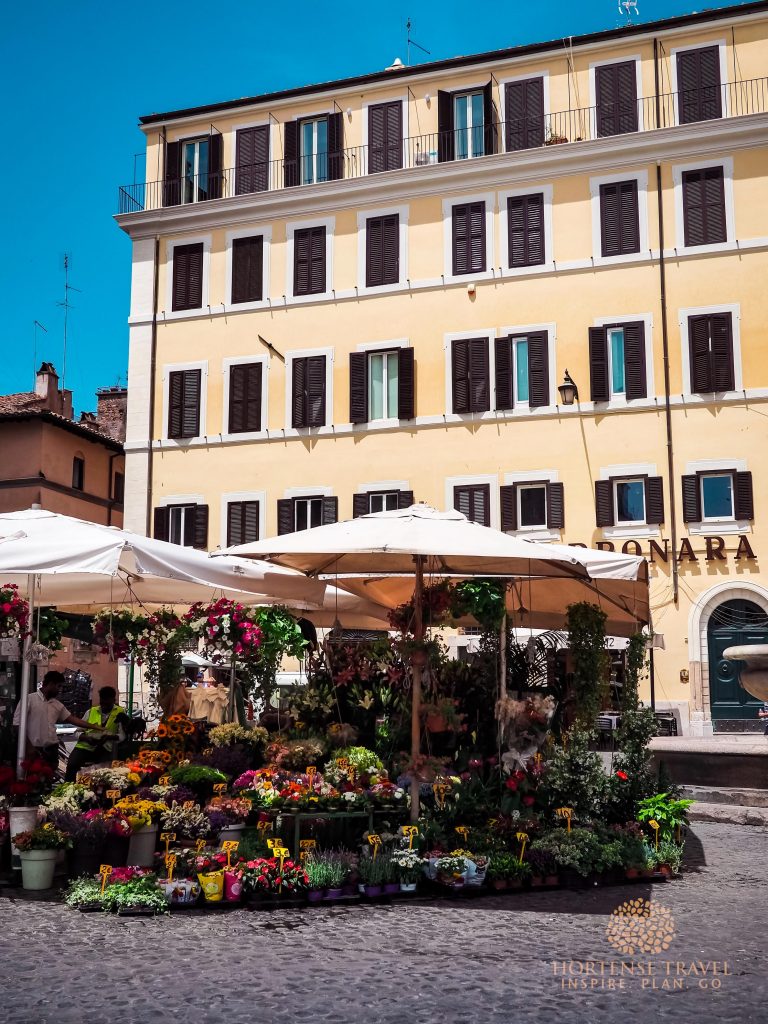
10. Piazza Navona
The Piazza Navona is located north of the Campo de’ Fiori. This plaza dates back to the 1st century AD and has served several different purposes since. It was a stage for entertaining events, such as theatrical performances, and, between the 15th-century and 1869, it was also the home to the city market.
At the middle of the plaza, you’ll find the Fontana dei Quattro Fiumi (English: Fountain of the Four Rivers) that features a unique obelisk at its center. This obelisk dates back to between 81 AD and 96 AD and, even though it includes hieroglyphs, it was built by a Roman emperor and isn’t of Egyptian origin. Another fun fact about the obelisk is that it was buried over the years but was excavated in 1649.
There are two more fountains in Piazza Navona worth seeing. These contain the mythological elements you’ll become familiar with during your stay in Rome. The buildings surrounding the plaza are also mesmerizing!
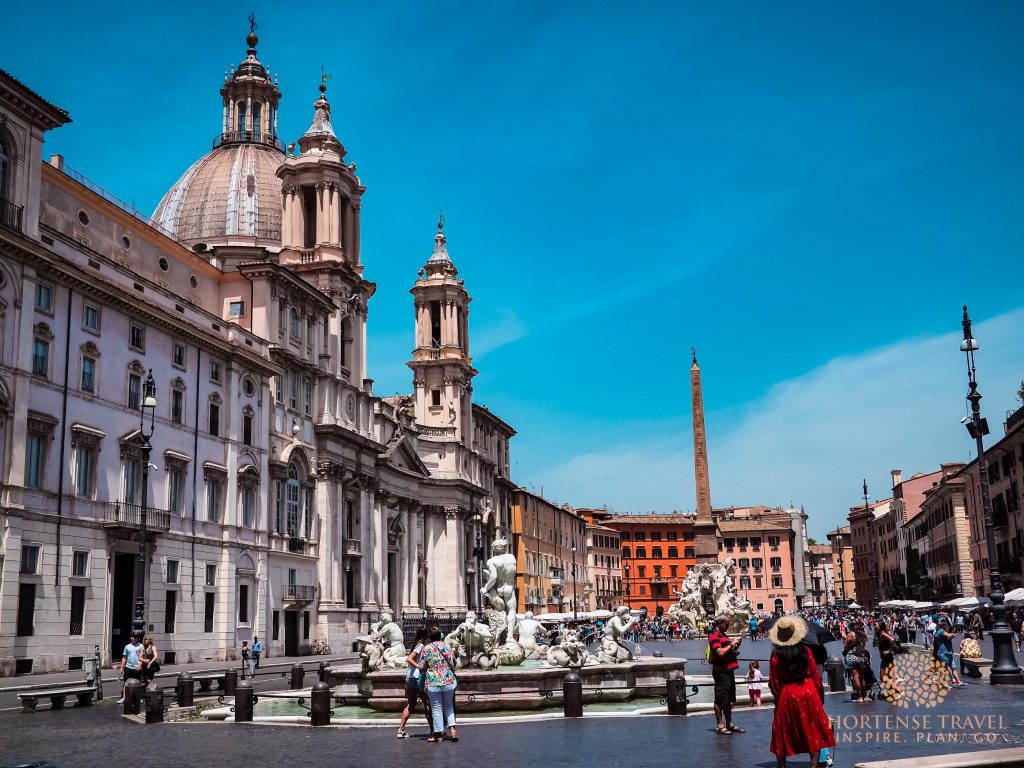
11. Pantheon
Another of Rome’s most famous monuments is the Pantheon. It was probably built as a Roman temple between 113 AD and 125 AD and it has been a church dedicated to St. Mary of the Martyrs since 608 AD.
Its architectural style inspired many other buildings. Marvel at its iconic portico with towering columns and the coffered dome that covers its circular inner chamber. This is a very well preserved building that you definitely shouldn’t miss!
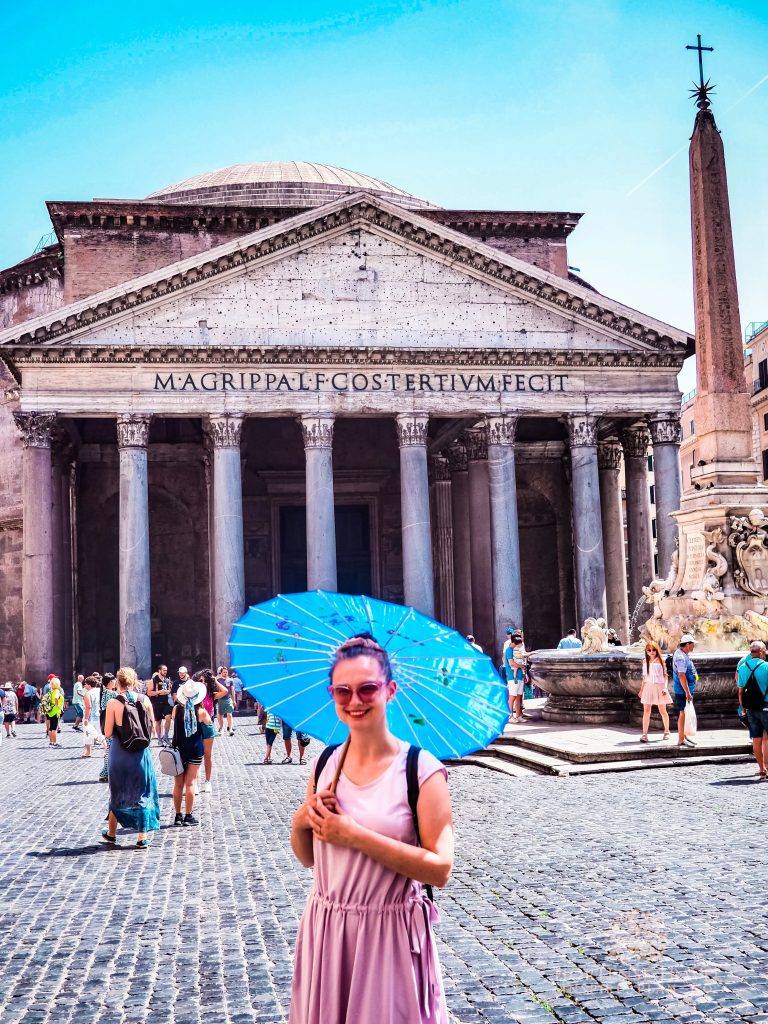
12. Chiesa di Sant’Antonio dei Portoghesi
There’s a piece of Portugal in Rome. It’s the Chiesa di Sant’Antonio dei Portoghesi (English: Church of the Saint Anthony of the Portuguese). As a resident in Portugal, I couldn’t leave this beautiful church off this list of the 20 best historical sights in Rome.
The facade of the Chiesa di Sant’Antonio dei Portoghesi is only the appetizer for what you’ll find in its interior. Enjoy the rich materials used, the domed ceiling and its intricate golden details, the numerous paintings found on both the walls and the ceiling, and the imposing organ.
This 17th-century Baroque church has been the beating heart of the Roman Catholic Portuguese community in Rome. In addition to religious events, it also hosts cultural events, including the organ concerts many visitors rave about!
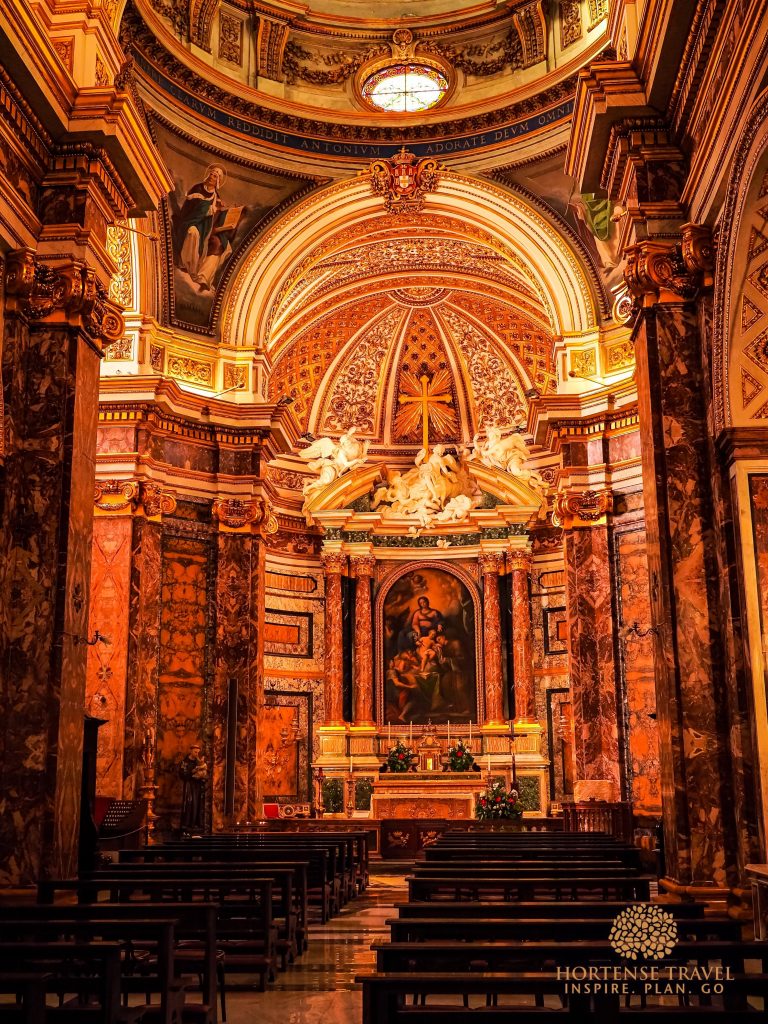
13. Castel Sant’Angelo
The Castel Sant’Angelo is the Mausoleum of Hadrian. It was originally built by Roman Emperor Hadrian as the burial site for him and his family. In the 14th century, it was converted by the popes into a castle and it was also connected to the St. Peter’s Basilica. Throughout the years it was also used as a prison. Today, travelers visit the monument for both its architectural style and for the museum it contains.
The cylindrical building was once the highest in Rome and is still an impressive sight! Castel Sant’Angelo may be accessed through the Ponte Sant’Angelo which is a Roman bridge with four iconic angel statues. It’s from the other side of that bridge that you’ll get the best view of both monuments.
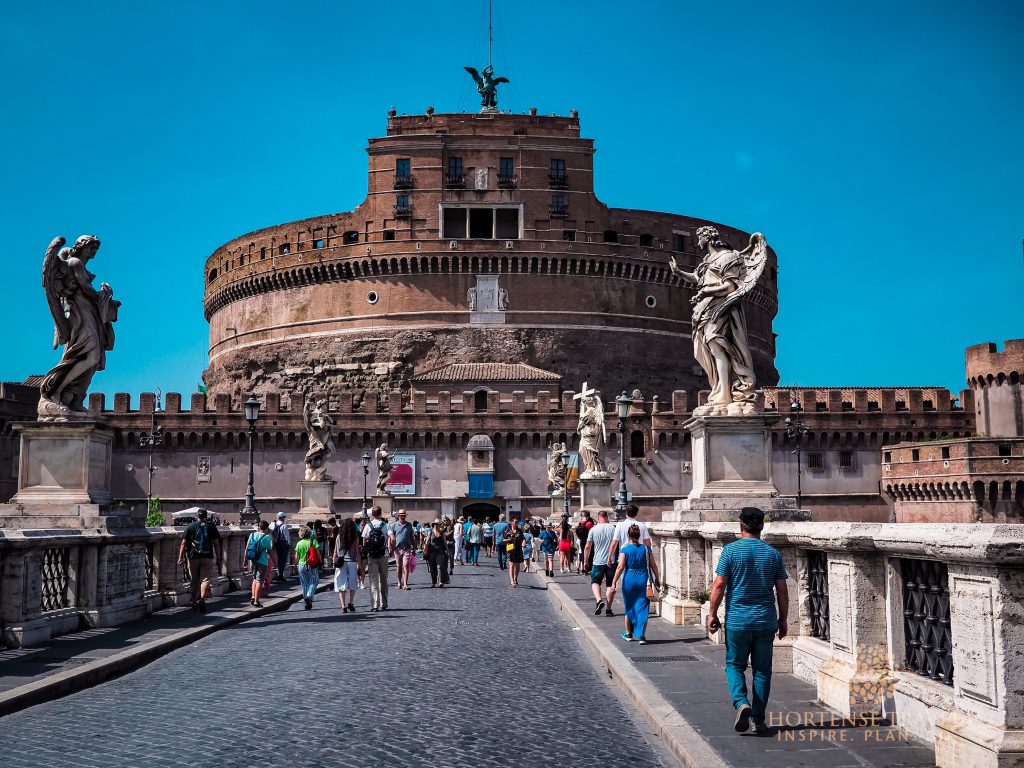
14. Basilica Papale di San Pietro in Vaticano
Best known as the St. Peter’s Basilica, the Basilica Papale di San Pietro in Vaticano is located in the Vatican City on the site where St. Peter was supposedly buried. It’s an unmissable point of interest for both Roman Catholics and architecture lovers.
It was built between 1506 and 1626, meaning it took over 100 years to complete. Its facade filled with columns is one of the most iconic in the Vatican City and its interior is topped with one of the world’s largest domes.
It’s one of the world’s four major basilicas and the only one in the Vatican City since the other three are located in Rome. Even though it isn’t the official seat of the Pope, the St. Peter’s Basilica is the location chosen for most of the Papal liturgies and ceremonies.
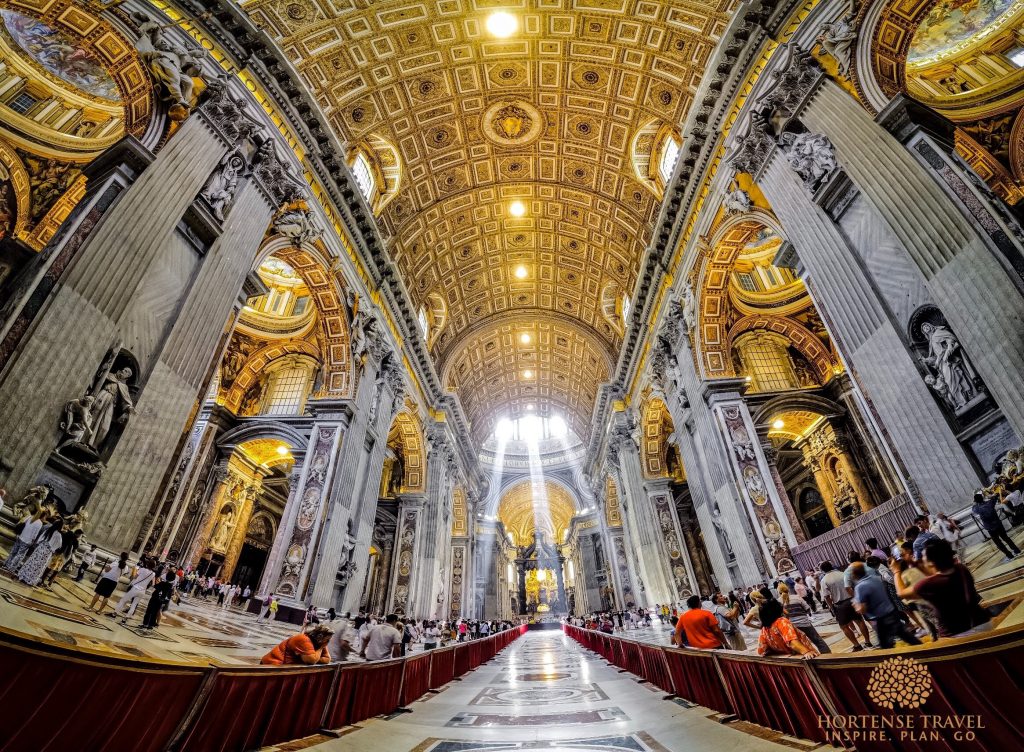
15. Vatican Museums
Another point of interest in the Vatican City is the Vatican Museums (Italian: Musei Vaticani). The Vatican Museums are composed of both religious and art museums. It includes 54 galleries and one of those is the famous Sistine Chapel (Italian: Capella Sistina). That’s probably part of why the Vatican Museums are considered the world’s fourth most visited art museum!
You’ve probably heard of the iconic Sistine Chapel and its ceiling decorated by the Italian artist and architect Michelangelo. However, there’s obviously a lot more to be admired at the Vatican Museums. For example, in its Collection of Modern Religious Art you’ll find very unique pieces that may defy the preconception you had of religious art.
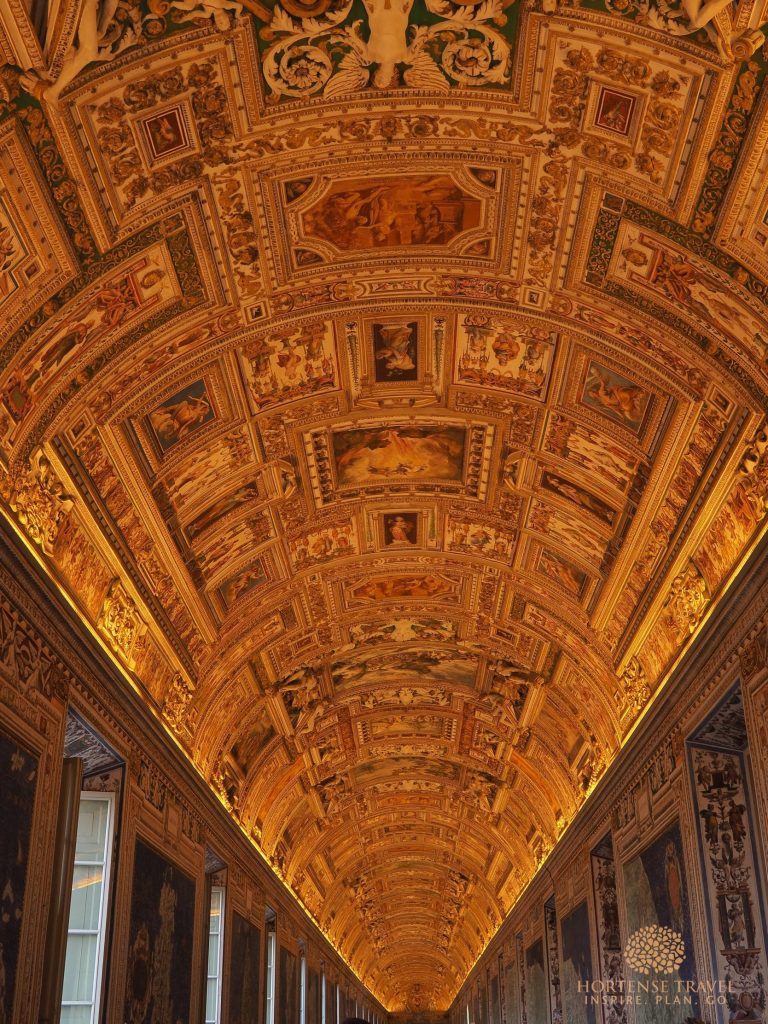
16. Basilica di Santa Maria Maggiore
The Basilica di Santa Maria Maggiore is one of Rome’s three major basilicas. It belongs to the Vatican City even though it’s located in Italian territory.
One of the reasons the building stands out is its 75-meter (246-feet) bell tower that dates back to the 14th century. As with many of these grand monuments, there’s a plaza in front of it where you may relax and marvel at the basilica from afar.
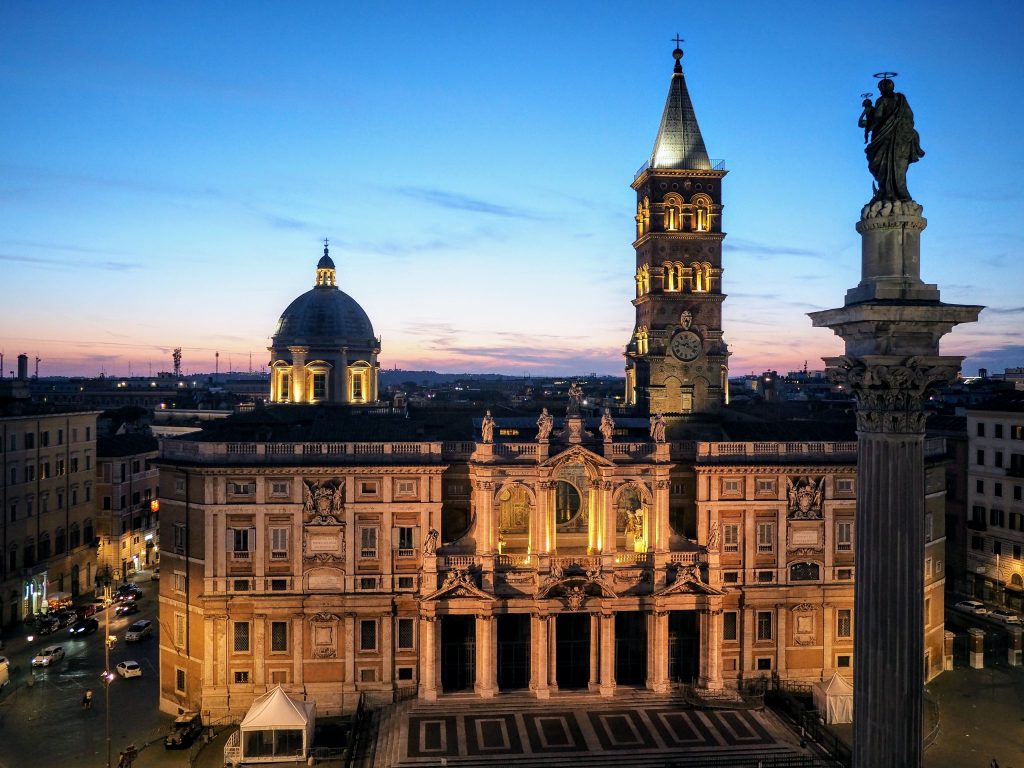
17. Trastevere Neighborhood and Aventine Hill’s Keyhole
The Trastevere neighborhood is one of the least crowded areas you’ll visit in Rome. There are still tourists there but less than you’ll get used to in the city. Stroll through its streets and enjoy watching the locals go about their lives.
My suggestion is for you to combine a visit to both the Trastevere neighborhood and Aventine Hill, right across the river. Aventine Hill’s most famous attraction is probably the keyhole of an apparently regular looking green door. Yes, a keyhole! What’s special about this one is that looking through it you’ll see the perfectly framed St. Peter’s Basilica in the distance.
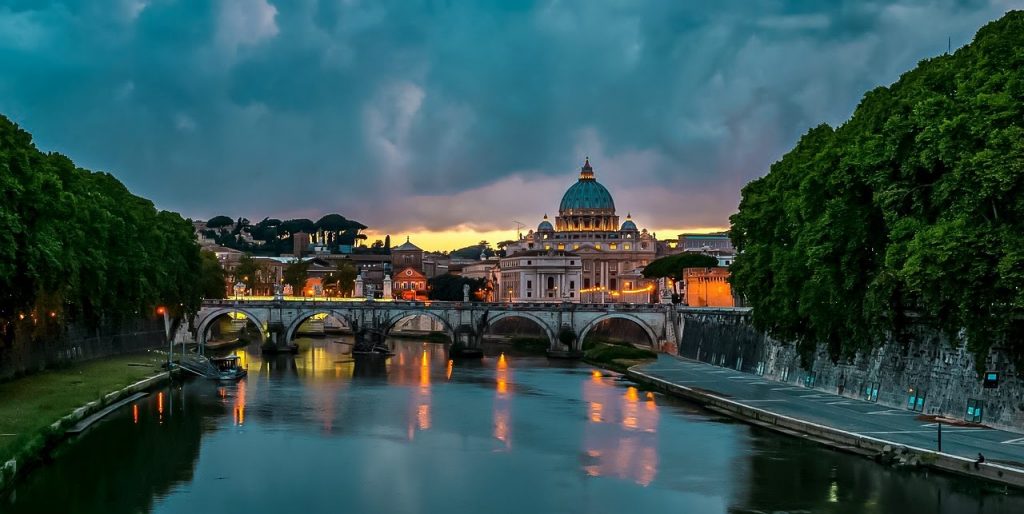
18. Colosseo
Whether you plan to enter it or to only contemplate it from the outside, the Colosseo (English: Colosseum or Coliseum) should be in your must-see list. It’s the largest amphitheater to have been built in the world and its construction began in the year 72 AD.
Once holding tens of thousands of spectators, the Colosseo is known by most people as the stage of gladiatorial contests and animal fights. However, many cultural events also took place in the amphitheater, including the staging of naval battles and of plays with elements of Roman mythology. It also served other essential purposes for the people in Rome after that golden period.
What you’ll see today are the ruins of the Colosseo. The massive amphitheater was damaged throughout the years by both earthquakes and thieves. Still, it’s an amazing historical sight in Rome that you won’t want to miss.
Similarly to the Fontana di Trevi, the Colosseo gets crowded! The best way to avoid its long queues is to purchase your tickets in advance. You may even do so online!
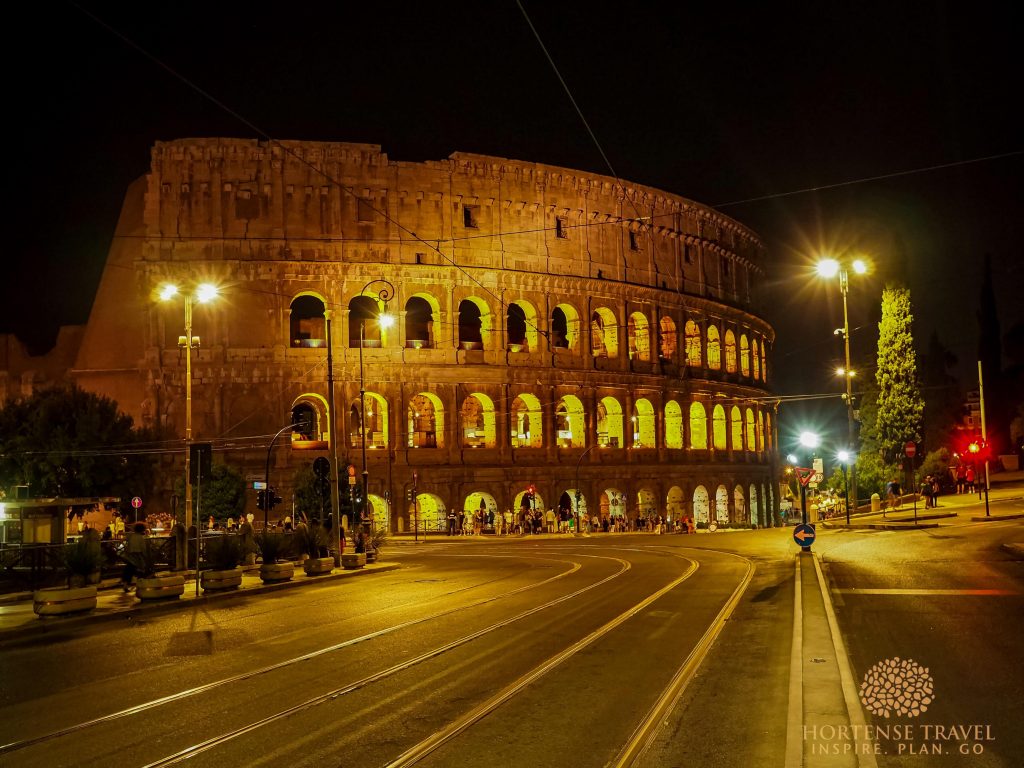
19. Palatine Hill
Palatine Hill is one of the Seven Hills of Rome and is located in the center of these. This is one of the oldest areas of Rome. There’s evidence that people have lived in Palatine Hill since 10th century BC! Throughout the years, it was also the home of Roman emperors and influential Roman people. You’ll find plenty of interesting ruins there, including those of at least three palaces.
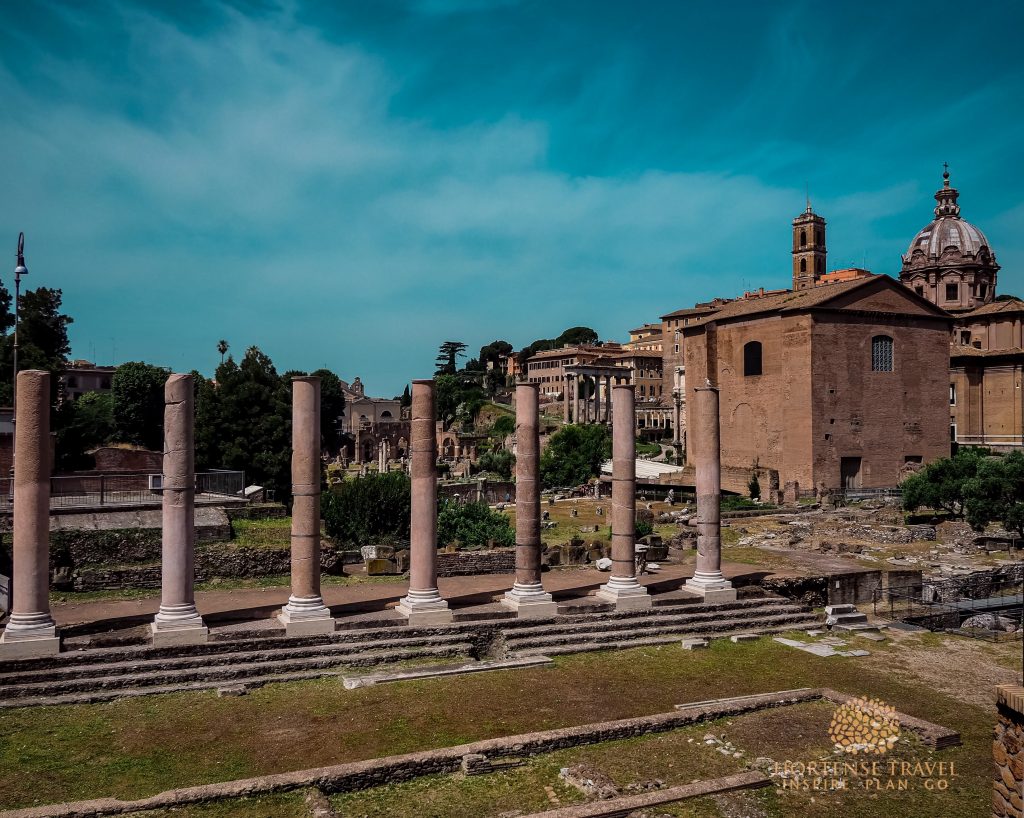
20. Monti
Rome isn’t solely made up of ruins, grand buildings, and monuments. The residential districts of the city also have their magic and shouldn’t be overlooked. My suggestion for you is Monti, the city’s oldest district. Its residential streets are located right by the Colosseum and the Mercato di Traiano. Since you’re probably visiting those points of interest already, there are no excuses not to give Monti a go!
Monti passed through several stages. At first, it was a bustling area filled with the poor, criminals and brothels. During the Middle Ages, Monti lost part of its population due to damage to the city’s aqueducts that led to the interruption of the district’s water supply. It was only in the 19th century that this district saw a substantial increase in population once again.
Today, the Piazza della Madonna dei Monti is one of its most popular areas and the perfect place for you to see the local daily life on its course. Dining out in one of the restaurants in Monti is less touristic and prices are great for what you get. Like this homemade pasta with wild boar sauce.
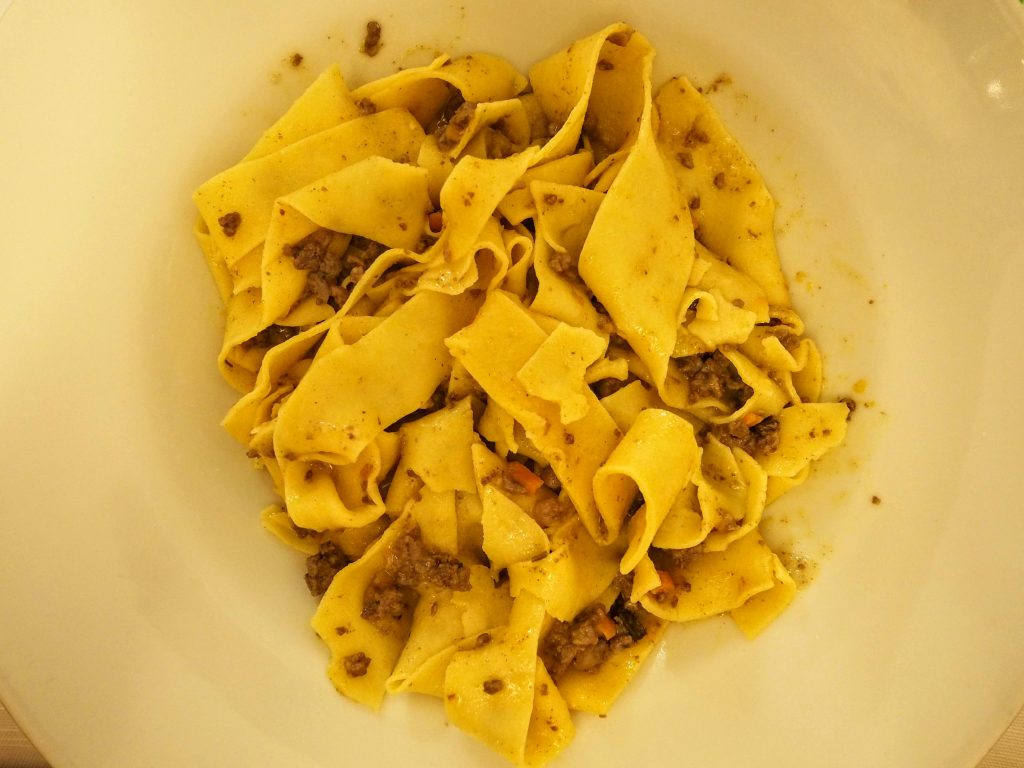
Now you have an idea of why Rome is often compared to an open-air museum. There’s a lot to see and these 20 historical sights are only a sneak peek into what Rome and the Vatican City have to offer! Give yourself plenty of time there to calmly take in everything you’ll see and feel during your trip.
Don’t know where to start? Let me help you plan your dream trip to Rome and the Vatican City!
